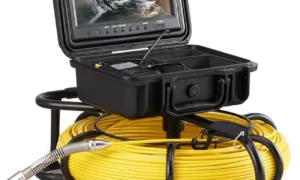An essential part of any business is the employees that make it go, grow and thrive. This is especially true for restaurants and hospitality businesses, where employees are on the front lines of engaging and delighting customers. However, these businesses have been some of the hardest hit when considering how difficult it is to find and retain quality labor in today’s tough market. According to the National Restaurant Association, 65% of restaurant operators say they don’t have enough staff to support customer demand. A recent study by the American Hotel & Lodging Association found that 97% of hotel managers say they are dealing with a staffing shortage, and 49% saying they are severely understaffed.
The impact the current labor shortage has had on the restaurant and hospitality industries has been well covered. While dissecting the cause and effect of the dilemma is important, what’s more meaningful are discussions around how these industries can move forward; examining what’s worked and what hasn’t, and most importantly, uncovering how decision-makers in the service industry can set businesses up for long-term success.
Embracing Technology’s New Role
Unsurprisingly, the staffing shortage has led to a decrease in satisfied customers. According to the American Customer Satisfaction Index’s Travel Study, guest satisfaction fell 2.7% from 2021 to 2022, with long wait times and negative experiences with overworked staff significantly contributing to this figure.
Many operators in both restaurant and hospitality sectors have turned to modern tech solutions to help ease the pain caused by the labor shortage. For example, large chain restaurants like Marco’s Pizza and Applebees are leveraging AI for call-in orders and reservations so that the staff can better focus on serving customers on-site. Michigan’s Jet’s Pizza chain is offering a 15% discount to customers who use its automated phone line to order. In the hospitality space, one of the first technologies hoteliers flocked to was digital check-in solutions; usage of this tech has increased 66% among U.S. hotels. Digital room keys are also one of the more popular options as 46% of travelers say a mobile room key is an important feature. Other tech solutions like physical robots that clean rooms or deliver food and beverages, digital payment and communications solutions, and others, are not only driving improved guest experiences, they also make the available staff more efficient and available to personalize guest experiences.
Proper Planning And Customer Education Is Key
Deploying tech to survive in this thin labor market requires thoughtfulness about which technologies fit into short and long-term plans, and investing in the ones that can actually boost staff efficiency and enhance customer experiences. Having the right solutions in place can significantly improve staff productivity and customer experience. However, poorly implemented and/or rushed technology, an added obstacle to staff and not part of a long-term plan can deliver the opposite effect.
When rolling out any new tech, especially in the restaurant and hospitality space, managers and operators should first ask “What convenience or streamlining am I adding to the overall experience?” For new technologies to have the desired effect, the bottom line is it must add value to the consumer’s day-to-day experience. Tech like digital payment options certainly add value in theory, but these solutions must actually deliver that same value in practice. For example, if a pay at table or digital check-in solution frees up staff, but they’re still unable to engage customers better, managers must then reevaluate their plans and examine if this was the right tech for a specific problem. If the new tech fails even 5% of the time, the most important customers, the early adopters, will spread the word about their negative experience. As the old saying goes, “You don’t get a second chance at the first impression.”
For hotels specifically, having a consistent digital experience is more impactful for sustainable results than introducing one-off tech solutions. Hotel operators must offer a full experience around digital that makes a stay more entertaining, efficient, and beneficial than just a robot or digital key experience would be. This includes the ability to order (sundries, food, transportation, drinks, tickets for local events), the ability to reserve a table/seat at the bar, the ability to tip staff, and more. One hub where guests can manage and even customize their experiences and employees are more informed and ready to delight, is what really delivers the modern experience that is talked so much about.
About CardFree CEO and Co-Founder, Jon Squire
Jon Squire has more than 20 years of business, marketing, and product development experience in financial services and emerging technologies. Jon founded CardFree in 2012 with the vision of filling a gap in the marketplace for an integrated commerce platform for large merchants. Jon has consistently driven innovation and created world-class product offerings in new categories. He launched the first national mobile P2P offering in partnership with Sprint and PayPal and is well known for his leading-edge work with NFC, barcode, and alternative technologies that integrate with the point of sale. Earlier in his career, he also led mobile/e-commerce payment initiatives for Wells Fargo and ran E*TRADE Advisory Services.

































